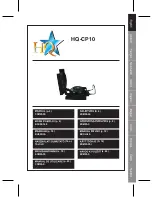
Figure 20
Figure 21
Figure 19
Actual distance is:
12,000 feet
or approximately
2.25 miles
.
9 -- Positioning
GPS receivers require an
understanding of coordinate
positioning in order to use waypoints.
This section explains Universal
Transverse Mercator (UTM) grid,
latitude-longitude and triangulation to find a position. Use the method best suited for your application.
9.1 UTM Coordinate System
Universal Transverse Mercator (UTM) is a square grid coordinate system measured in meters from the
Equator (0
o
latitude) and a zone meridian. UTM flattens and divides the earth into 60 zones, each
zone 6
o
of longitude and each with a zone meridian down the center. (Fig 20) UTM grid above 84
o
N.
and below 80
o
S. latitude are considerably distorted, and are excluded from maps. Most GPS
receivers accommodate for UTM grid.
A position is measured in eastings from the zone meridian and northings from the Equator. Eastings
always increase right (east) and northings always increase up (north), on a map.
The following examples use a 1;24,000 (1:24k) scale topo-
map with 1,000 meter UTM tick marks. This is indicated by
3 small zeros in the full UTM label --
47
90
000m
E. If using a
scaled map other than 1:24k scale, identify a full UTM label
to determine distance between tick marks.
9.1.a -- Position Determination From a Map
1. Identify and document the zone number & map datum
from the map.
-
zone 11
& North American Datum 1927 (
NAD-27
).
(Fig 21)
2. Identify UTM tick marks and labels around the map’s
margin.
3. Draw lines connecting equal value UTM tick marks. (Fig 21)
- A 1,000 meter square grid will form.
4. Mark position with an “X”.
7


























